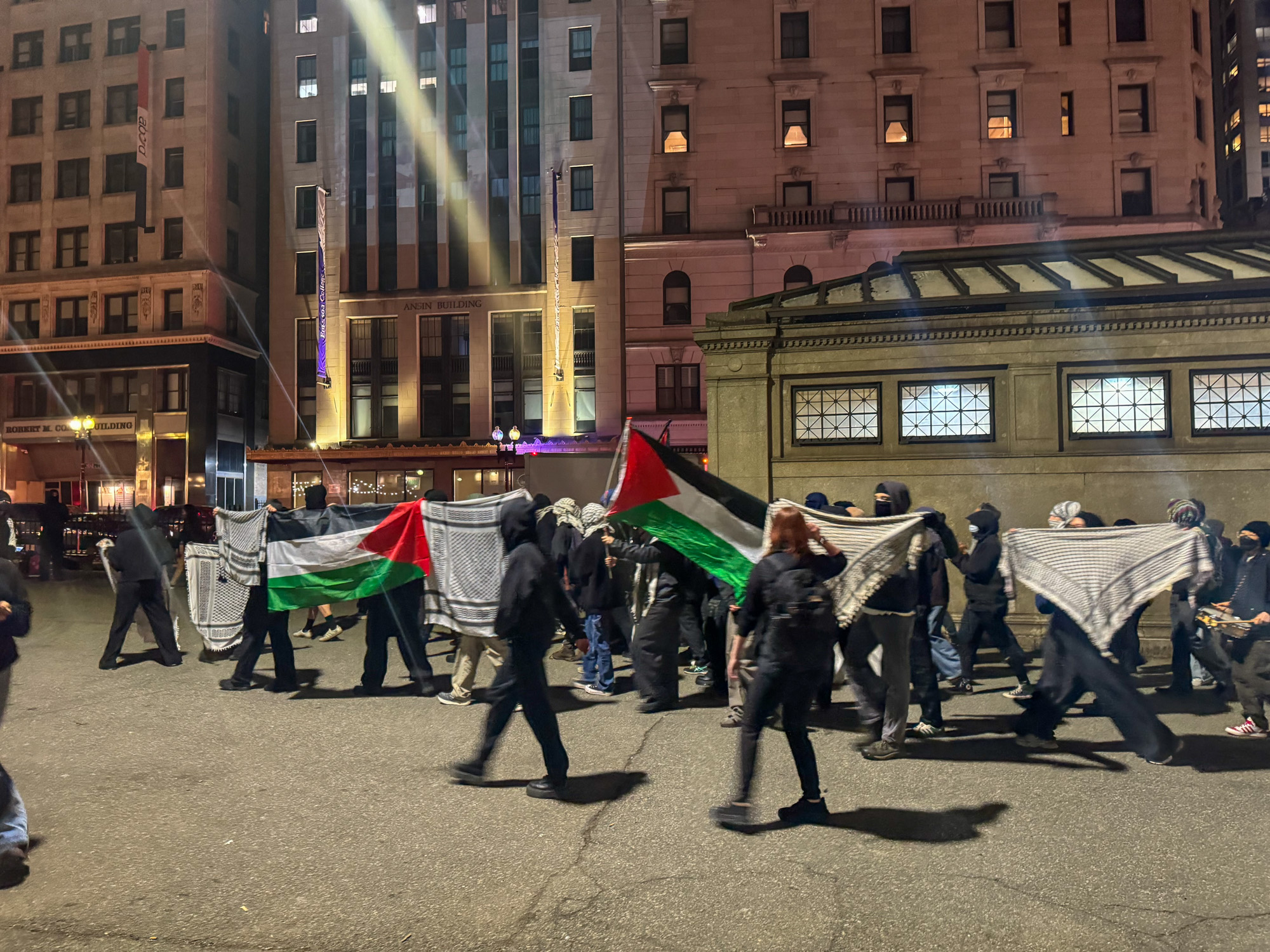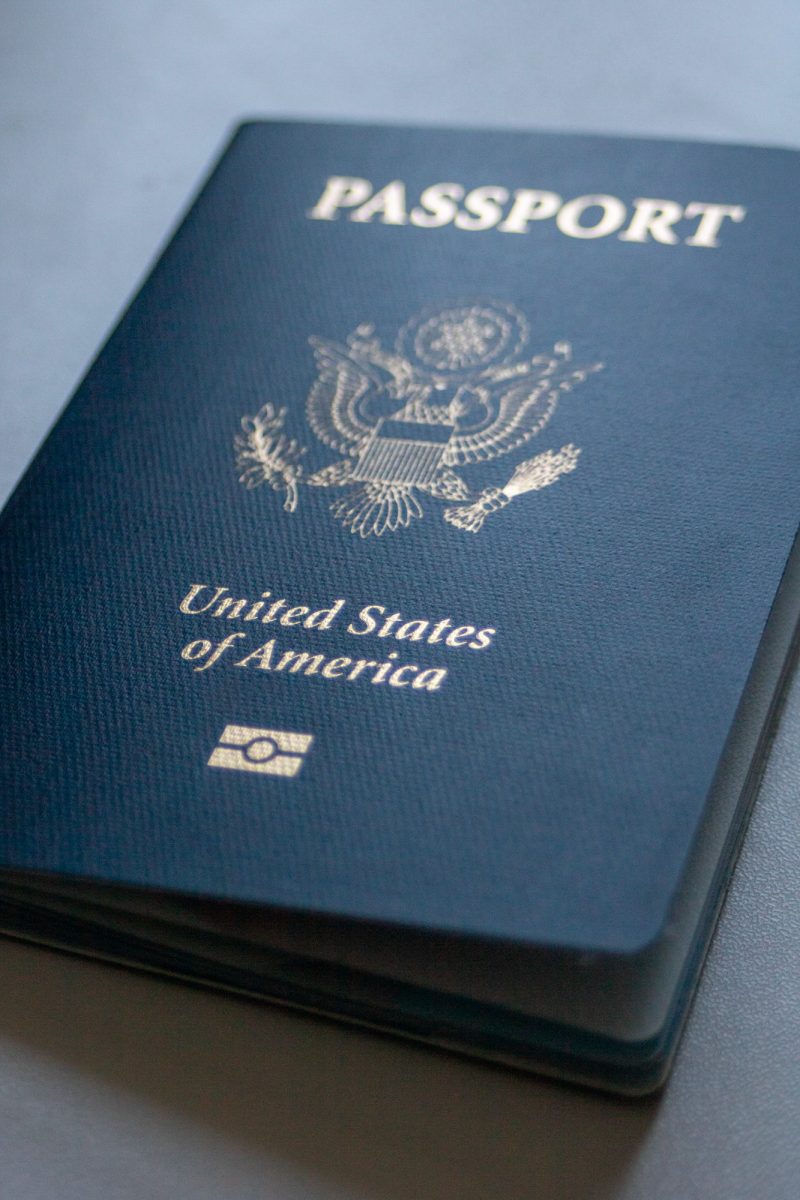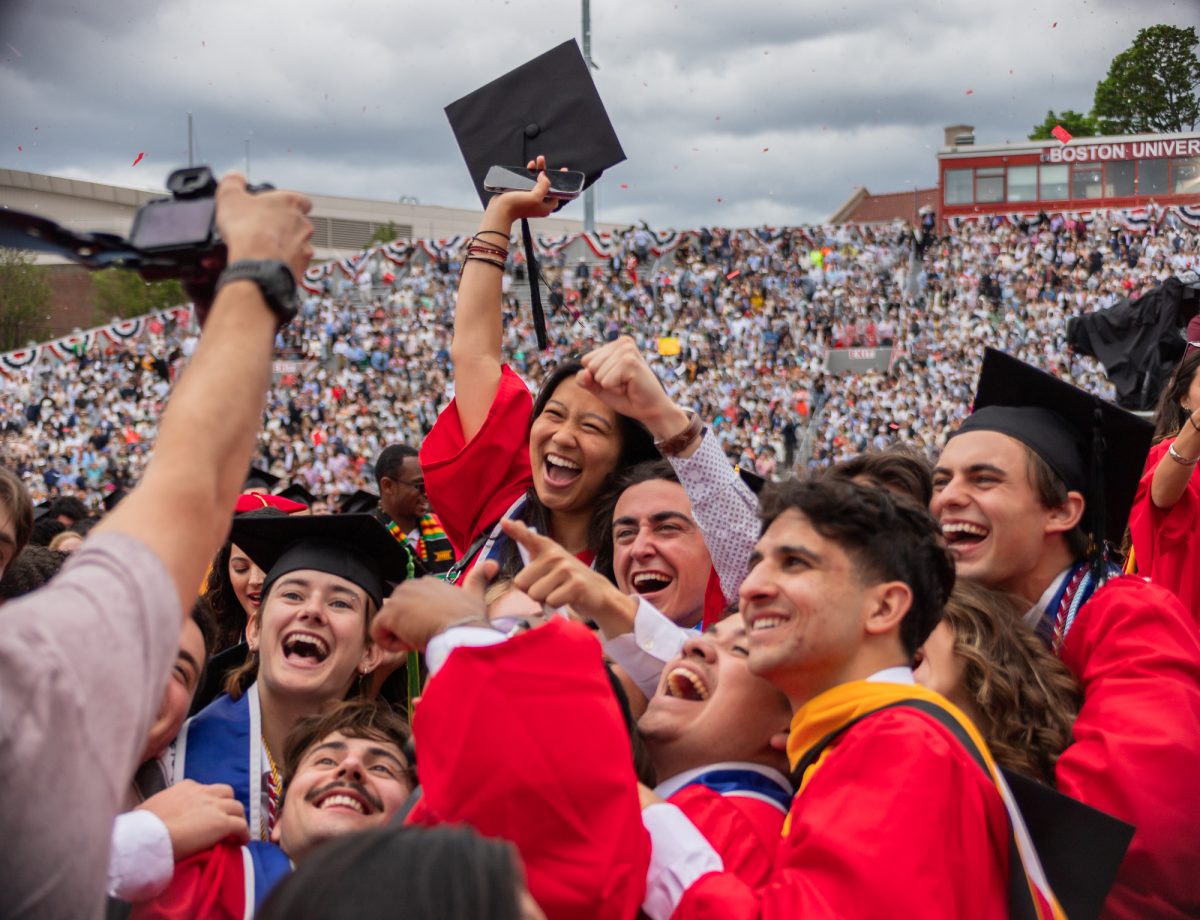While Adri Pray, editor-in-chief of Emerson’s independent student newspaper, The Berkeley Beacon, covered a Boylston Students for Justice in Palestine protest at Emerson College April 24, she was shadowed by two protesters who covered her camera and face with Palestinian flags.

“They had two people on me the whole rally, essentially blocking my view anywhere I would walk,” Pray said.
The rally was held in part to protest an article published by The Berkeley Beacon, in which Beacon reporters Pray and Yogev Toby compiled more than 10 hours of body camera footage to assemble a detailed timeline of the April 25, 2024 police raid on a pro-Palestinian encampment. The Beacon published roughly five minutes of the footage.
Later during the rally, a protester approached Pray, telling her she would never “be a real journalist,” and her “‘dumba— article isn’t going to do s—’” for her as a young professional.
“I definitely got the worst of it out of the Beacon people,” Pray said. “This is a reaction that I want to emphasize we have never gotten before.”
Boylston SJP — an unaffiliated Emerson organization — previously wrote in an Instagram post the Beacon “made a deliberate choice” to put the “community at risk” by publishing their article.
“The Beacon continues to launder state surveillance and zionist narratives as ‘reporting,’” the post reads. “Their record speaks for itself: misinformation, omission of critical context, reckless publication of students’ full legal names without consent.”
The post also attacks Toby, an Israeli-born Emerson student who served as a combat photographer for the Israel Defense Forces’ Spokesperson unit, calling him a “military propagandist.”
This controversy — among others surrounding media coverage of student organized pro-Palestinian events — has drawn renewed attention to journalists’ role in balancing public interest with individual safety in a political climate where student activists increasingly face legal consequences.
“This story was necessary because it can’t lie,” said Pray. “The footage doesn’t lie. Police body camera footage is an important accountability tool.”
Pray said she tried to afford SJP members the opportunity to view the footage prior to publication after they voiced concerns “that people would be identifiable,” but they refused.
“We were not dismissing them in any way,” she said. “We were trying to be conservative about the kind of force we were showing and also who we were showing in these vulnerable positions … Even though it is public record, it’s also a matter of public decency.”
Boylston SJP has been on Emerson’s campus since the Oct. 7, 2023 Hamas attack on Israel. Pray said the Beacon has published op-eds written by SJP members, concealing their identities.
“We wanted to protect them,” Pray said. “It was especially important that we do that after the federal investigation into Emerson became apparent.”
Ledia Hysenbegasi, a student photojournalist at Emerson, said the demonstrations started off as “peaceful protests,” but as tensions with the war increased, the organization’s activities grew to include vandalizing Emerson property and stopping traffic.
“Specifically, a lot of people do not like SJP because of how they protest, not what they protest,” Hysenbegasi said.
Douglas Struck, a senior journalist-in-residence at Emerson, said the supposition that the Beacon’s reporting endangered students is “simply wrong” and “amazingly inaccurate.”
“It is inaccurate because if you look at the story in question, not a single image shows the face or depicts the voice or any other defining characteristics of any of the students who were involved in the protest,” he said.
Struck reported in the Middle East for 16 years, during which he visited Gaza “dozens of times.”
Boylston SJP is “shooting themselves in the foot” by attacking the Beacon’s coverage, Struck said.
“The student paper has been the only outlet for thorough and complete coverage of this whole issue and the protests,” Struck said. “If it weren’t for the Berkeley Beacon, the Emerson community would not know what was going on and what had gone on during those arrests.”
Dan Kennedy, a professor of journalism at Northeastern University, said the Beacon’s choice to publish bodycam footage did not pose any ethical concerns, since no protesters were identifiable in the footage.
“Bodycam footage is a public record,” he said. “News organizations are going to use any public record if they think it advances public understanding of an important issue.”
One of the four major principles in the Society of Professional Journalists’ Code of Ethics is to “minimize harm,” Kennedy said.
“If you report that the mayor is taking bribes from the trash collection contractor, you are harming the mayor, but it’s worth doing,” Kennedy said. “You’re telling an important story that the public needs to know in that situation. That’s why it says minimize harm, rather than eliminate harm.”
Kennedy said he first noticed student journalists facing backlash six or seven years ago for photographing protesters in “recognizable ways” — a shift he discussed with his journalism classes at the time.
During an anti-Trump protest in Boston a few years ago, Kennedy said he photographed protesters’ faces without hesitation.
“A lot of us were embracing what had traditionally been the ethic, which is if you don’t want your picture in the paper, don’t protest,” he said. “It was a fairly hard-line position that we all took.”
Those norms are shifting, Kennedy said. At a recent protest at City Hall Plaza in support of Tufts University student Rümeysa Öztürk, who was arrested by federal immigration authorities, he said he consciously avoided photographing faces — the first time he’d ever done so in his reporting career.
“Now, we’re in an era where you really do have to worry about people being picked up and deported if they are recognizable in any way,” Kennedy said. “It’s just a completely different mentality.”























































































































